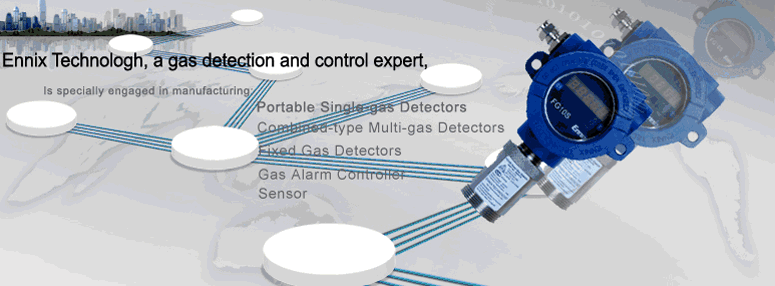Carbon Dioxide - CO2
Hazard: Flammable Nonflammable Gas
Classification: Health Simple sphyxiant
Oxidizing
Synonyms: Diesel Exhaust Component, Dry Ice Carbonic Acid
Exposure limits: (OSHA) PEL\TWA: 5,000 ppm
(ACGIH) STEL: 30,000 ppm.
(OSHA) IDLH: 40,000 ppm .
Industries: Landfill, Mines, Breweries
Despite the fact that we breathe out carbon dioxide and that it is present in the atmosphere (about 400 ppm), its maximum safe level is 5000 ppm (0.5% by volume). It is a product of complete combustion, and is found in brewing and other fermentation processes. CO2 along with methane are the primary components in landfill and sewage treatment digester gas. CO2 is used to carbonate beer, and possesses a hazard in the brewing industry particularly because CO2 is heavier than air and collects at low levels. There is some degree of risk in crowded, badly ventilated places, and an oxygen deficient atmosphere often accompanies this problem. Another typical practice is to increase plant growth by elevating normal CO2 levels in greenhouses. It is odorless and colorless and difficult to measure in ppm levels, infrared absorption being the usual technique.
Source: Dangerous Properties of Industrial Materials (Sixth Edition) by N. Irving Sax
Effects of Various CO2 Levels
Carbon Dioxide Level in PPM Resulting Conditions on Humans
300 (0.03% vol.) Nothing happens, normal concentration in air
3,000 - 5,000 Low concentrations cause increased respiration and headache
5000 (0.5% vol.) Lung ventilation increases by 5%. PEL
10,000 (1.0% vol.) Symptoms may begin to occur, such as feeling hot and clammy, lack of attention to detail, fatigue, anxiety, loss of energy, weakness in the knees commonly know as (jelly legs).
20,000 (2.0% vol.) Lung ventilation increases by 50%, headache after several hours of exposure
(5 to 10% vol.) Violent panting and fatigue to the point of exhaustion merely from respiration & severe headache. Prolonged exposure at 5% could result in irreversible health effects. |


